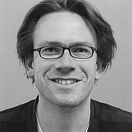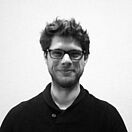
WG2: Closing the temporal gap: from daily observations to seasonal trends
The general aim of WG2 is to improve the time-series processing of satellite sensor data for modelling vegetation processes related to seasonal productivity. This includes phenology (timing of vegetation growth stages) as well as the production of green foliage biomass and relationships with the carbon cycle. This aim will be achieved by using a combination of satellite data from old and new sensors (e.g. S2, S3), with temporal spectral observations from ground-based towers and instruments on lowflying aerial platforms (UAVs). By closing the temporal gap between day and season, a better understanding of the spatiotemporal changes of plant photosynthetic rate will be achieved linking the objectives of WG2 to those of WG1.
Objective 2.1 To improve the understanding of biases in satellite data time-series caused by cloud and atmospheric influences, and decide how to address them in the subsequent processing.
Objective 2.2 To develop robust methods/tools for gap-filling and modelling satellite observations in time, and the quantification of temporal representation uncertainty, taking into consideration the biases observed in the data (Objectives 4.4).
Objective 2.3 To improve understanding of how vegetation productivity models can be improved with respect to the scaling of light use efficiency from short to long time intervals.
Objective 2.4 To develop robust calibration and validation methods/tools and protocols for assessing time-series data from satellites, based on near-ground observations at multiple spatiotemporal scales using standardized radiometric measurements (Objective 4.4.).
Task 2.1 Workshop making inventory and exchanging experience in time-series processing in year 1 leading to the development of standardized protocols. Workshop in year 3 to set up best practices for quality assessment for satellite time-series involving relevant stakeholders.
Task 2.2 Training school on data processing and the application of satellite time-series for vegetation production studies. Here, we will use the standardized time-series and especially explore the link with vegetation productivity models.
Task 2.3 Intercomparison exercise in year 2 for a selection of sites (with existing ground-based instrumentation) where for a specified period ground campaigns will be executed (e.g., UAV platforms) providing benchmark datasets for the development of calibration and validation methods.
Deliverable 2.1 Protocols for handling biased observations and gap filling in long-term satellite time series.
Deliverable 2.2 Unique standardized long-term time-series satellite dataset at medium resolution (10-30 m) supporting vegetation production studies.
- Data in brief paper
- In-situ crop phenology dataset and remote sensing phenology dataset
- The full manuscript is under preparation.
Deliverable 2.3 Publication of best practices for calibration and validation methods for satellite timeseries quality assessment using near-ground observations (jointly with WG4). (submitted)
Leading Team WG-2
 Dr Lammert Kooistra (leader), Wageningen University, Netherlands, lammert.kooistra@wur.nl
Dr Lammert Kooistra (leader), Wageningen University, Netherlands, lammert.kooistra@wur.nl
In his role as Associate Professor, Lammert am teaching in several Geo-information Science courses and supervising on average 8 PhD students. His research interest is in the development of integrated sensing systems, combining satellite, drones and in situ sensors for monitoring applications in agriculture and environmental resource management.
 Dr Helge Aasen (vice-leader), ETH Zürich, Switzerland, helge.aasen@usys.ethz.ch
Dr Helge Aasen (vice-leader), ETH Zürich, Switzerland, helge.aasen@usys.ethz.ch
Helge Aasen is a researcher with the Crop Science Group at ETH Zurich, where he leads the Team PhenoFly (www.phenofly.net, @PhenoFly). His research focus is the development of low-altitude / high-resolution remote sensing methods suitable to understand the interaction of plants with their environment.
 Dr Jean-Louis Roujean (vice-leader), CESBIO, France, jean-louis.roujean@cesbio.cnes.fr
Dr Jean-Louis Roujean (vice-leader), CESBIO, France, jean-louis.roujean@cesbio.cnes.fr
Jean-Louis Roujean is a Director of Research at CNRS. His domains of interest are measuring and modeling the radiative transfer in vegetation canopies for optical and thermal ranges with emphasis on the BRDF and heterogeneity scale. He led field experiments and recently developed a method for mapping time series of surface albedo in the frame of Copernicus Global Land Service.


